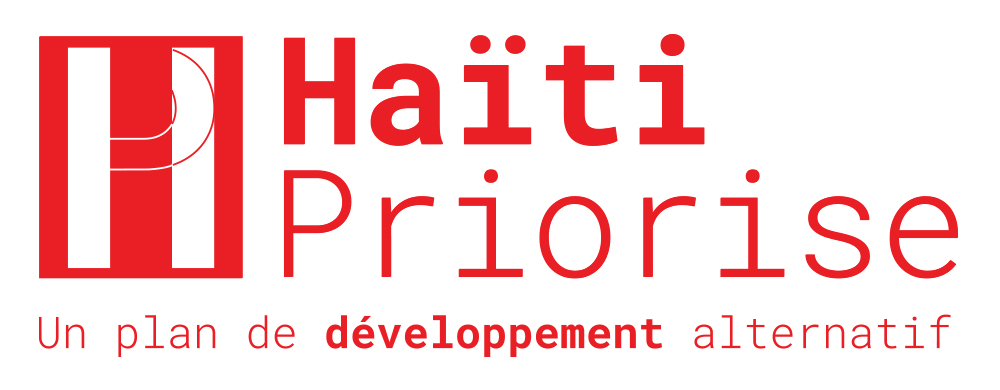Haïti Priorise: Domestic Violence, Hoeffler
The Problem
In Haiti, evidence from confidential surveys suggests that intimate partner violence (IPV) is a serious problem: about 273,200 women suffer from severe physical and/or sexual violence per year. This corresponds to 9.4 per cent of the population of 14-49 year-old women.
IPV has considerable consequences. It not only causes pain and suffering for the victims but creates costs for society. Victims are more likely to commit suicide, are less likely to complete education, are less likely to seek employment, have more unwanted pregnancies, are more likely to have underweight babies, and are more likely to contract sexually transmitted diseases including HIV.
Children raised in abusive households are also more likely to become victims or perpetrators of IPV.
IPV stops victims from fulfilling their potential and makes them less likely to be employed. Thus, it has far reaching consequences for societal development.
It is a human rights, public health and development issue.
Solutions
- Shelter for Women and Children
- Domestic Violence Helpline
- Prevent Teen Dating Violence
Benefits, Costs, and BCR
| Interventions | Benefit(Gourdes) | Cost(Gourdes) | Benefit for every Gourde spent |
|---|---|---|---|
| Shelter | 143.48 million | 10.22 million | 14 |
| Helpline | 175.89 million | 14.64 million | 12 |
| Prevention of Dating Violence | 35.53 million | 34.8 million | 1 |
Shelter for Women and Children
Haiti has had shelters in four departments of the country (North, Northeast, South-East and West) to accommodate women victims of violence.
The Shelter in the West was destroyed during the earthquake of January 12, 2010 and the Ministère à la Condition Féminine et aux Droits des Femmes (MCFDF) is currently trying to raise funds for the construction of a new shelter. This intervention is to rebuild this shelter.
Forensic, psychosocial, legal and social services are provided at these shelters, which are all managed by women's organizations, with the MCFDF playing a coordinating role.
Costs
Building costs are similar to a health facility, but the shelter will only have half the square meters (equivalent to about 10 million gourdes). The shelter will be staffed by four full-time staff. Their pay is assumed to be half of average annual earnings (about 29,000 gourdes per year). Additional costs are utility bills and building maintenance.
Costs are assumed to grow annually by the current inflation of 2.7% per year.
Benefits
Data suggests each year the Shelter will save one life, and the equivalent of 12 years lost due to injury and illness caused by IPV.
Helpline
Haiti does not currently have a national helpline for victims of IPV. There is very little evidence on the effectiveness of helplines in preventing and treating IPV victims. They are popular in some countries and, in some cases, phone calls increase dramatically in response to public campaigns.
Costs
The costs of a helpline would be renting an office (equivalent to USD $200 per person per month) plus the operation costs of ten per cent of the office rent.
Four full time staff would be employed at a cost of half of average earnings (about HTG 29,000 per month).
Training costs for staff are assumed to be ten percent of staff costs.
In addition, an information campaign at USD 0.0425 per person to reach every women aged 15-49 would be launched at the inauguration of the helpline.
Benefits
Although there is scant data, it is assumed that a helpline would avoid one per cent of deaths, as well as time lost to illness and injury caused by IPV.
Prevention of Dating Violence
There is evidence that teaching safe and healthy relationships decreases the incidence of sexual assault, increases knowledge of domestic violence, and reduces physical/sexual violence among teenagers. Assuming that one teacher can teach the curriculum to four different groups, 157 teachers would have to be trained, to reach 627 groups of 30 14 year-old pupils.
Costs
Based on a pilot program, it is estimated that the costs would involve three days of training per teacher and teaching assistant and five days of implementation. Teachers’ days are costed at USD $80 and teaching assistants at USD $10. Students do not receive remuneration but are provided with a refreshment (USD $1.5 per day).
In the pilot, only 31 per cent of the parents provided consent and currently only 25 per cent of all 14 year olds are in school. This translates to a treatment of eight per cent of all 14 year-old teenagers. This would mean 627 groups of 30 pupils would be taught.
As well as delivery costs, there is the cost of the use of outside experts and production of the study materials.
The cost of paying teachers to teach this curriculum outside school hours in Haiti makes the delivery of this intervention very expensive.
Benefits
It is expected that there would be an impact on teen IPV for four years, after which the effect decays. It is assumed that the same reduction holds for deaths. It is also assumed that after four years there will be some positive effects, such as reduced substance use, depression, self-harm etc, which have been associated with teen dating violence prevention programs.
Trial evidence indicates that this intervention could substantially decrease the prevalence of IPV among teenagers.

